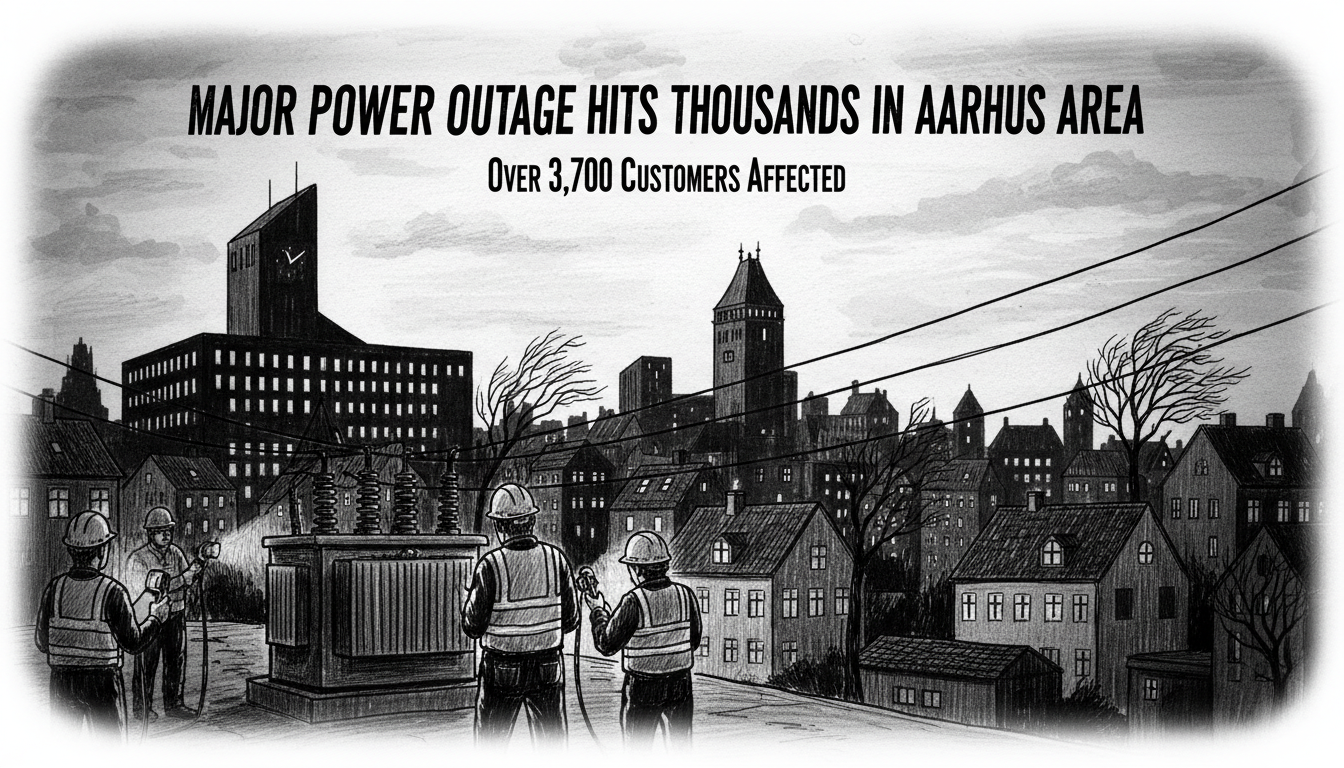Thousands of households and businesses across the Aarhus region experienced a widespread power outage on Sunday evening. The electricity disruption affected more than 3,700 customers in multiple suburbs and surrounding areas.
Power company crews worked through the evening to locate and repair the fault. The utility provider estimated that normal service would return by 11:50 PM local time. Some areas began seeing power restoration around 9:15 PM, according to local reports.
The outage impacted residents and businesses in Hinnerup, Aarhus N, Trige, Tilst, and Risskov. These areas represent a significant portion of the Aarhus metropolitan region, Denmark's second-largest urban area.
Power outages of this scale are relatively uncommon in Denmark, which typically maintains reliable electricity infrastructure. The country has invested heavily in grid modernization and renewable energy integration in recent decades. This incident highlights how even well-maintained systems can experience unexpected failures.
For international readers unfamiliar with Danish infrastructure, Denmark operates one of Europe's most stable power grids. The country frequently exports electricity to neighboring nations and maintains extensive interconnections with Germany, Norway, and Sweden. This regional connectivity usually provides backup options during local disruptions.
The timing of this outage during evening hours meant many residents were at home preparing for the week ahead. Power disruptions affect not just lighting but also heating, cooking, internet connectivity, and essential appliances. In a digitally dependent society, even brief outages can disrupt work, communication, and daily routines.
Danish utility companies typically face strict regulatory requirements for outage response times and compensation. Customers experiencing extended power losses may be eligible for reimbursement under consumer protection regulations. The country's energy authority monitors such incidents closely to ensure compliance with service standards.
Local authorities likely activated emergency protocols to assist vulnerable residents, particularly elderly or medically dependent individuals who rely on electrical equipment. Denmark's comprehensive social safety net includes contingency plans for utility disruptions affecting at-risk populations.
As Denmark continues its transition toward renewable energy, grid reliability remains a priority concern. Events like this outage provide valuable data for infrastructure improvements and emergency response planning. The relatively quick restoration time demonstrates the effectiveness of Denmark's utility maintenance systems.
What causes such widespread outages in modern power networks? Aging infrastructure components, extreme weather events, or technical failures at substations can trigger cascading effects. The concentrated nature of this outage suggests a localized equipment failure rather than generation shortages.
Power companies in Denmark maintain detailed public reporting requirements for major outages. This transparency helps build consumer trust and drives continuous improvement in service delivery. The final restoration statistics and cause analysis will likely be published in coming days.

